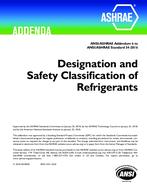Click here to purchase
An uncertainty analysis of a numerical performance model of a downdraft evaporative fabric cooling tower was conducted. Such a cooling tower can be rapidly deployed and can improve living conditions in hot, arid environments where temporary structures are needed for emergency shelters or special events. Previous experiments to verify the numerical performance model took place under nonideal ambient conditions. The downdraft flow was driven by very small density differences for the given ambient conditions and in the absence of wind pressure effects. For those test conditions,thepredicted moist air volume flow rate uncertainty was approximately equal to the magnitude of the measured value, and the moist air density uncertainty dominated the calculated volume flow rate uncertainty. The present investigation confirmed that uncertainties associated with the volume flow measurements are insufficient to account for the discrepancies observed between model predictions and experimentally determined values. A parametric study was performed where quantities such as the minor loss coefficients, spray water temperature, ambient dry-bulb temperature, ambient relative humidity, and ambient cross flow wind velocity were varied individually to facilitate comparison to a baseline case. It was shown that the inaccuracy in the spray water temperature measurements was insufficient to entirely account for the discrepancies between measured and predicted moist airflow rates. Furthermore, this study demonstrated that the performance of the fabric evaporative cooling tower was enhanced in situations where steady wind conditions existed using a wind capture device.
Citation: 2019 Annual Conference, Kansas City, MO, Technical Papers
Product Details
- Published:
- 2019
- Number of Pages:
- 12
- Units of Measure:
- Dual
- File Size:
- 1 file , 1.1 MB
- Product Code(s):
- D-KC-19-001


